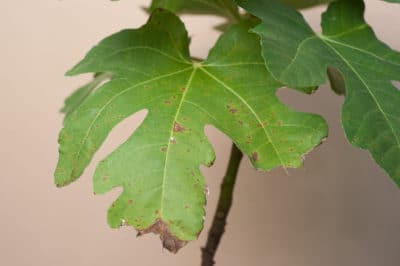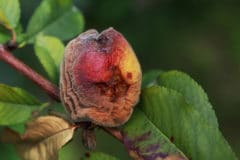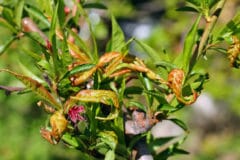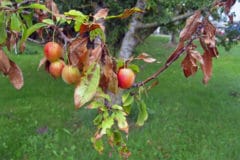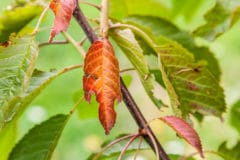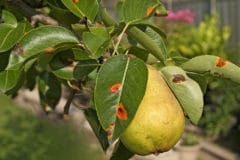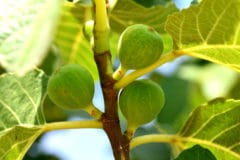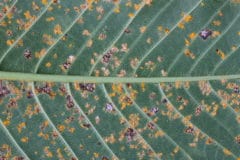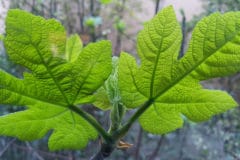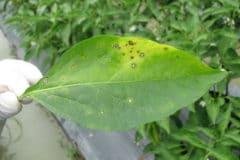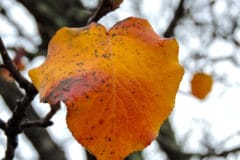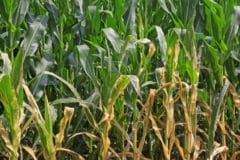About Figs
Figs are native to the Mediterranean, although they will also grow in other climates. Hardiness varies, with different fig varieties adapted to USDA Zones 5 through 11. They tolerate many different soil conditions, although rich soils can be a problem due to lush growth. Drought tolerant, they may still need irrigation in dry summer areas.
Disease Resistance
Planting disease resistant fruits is one of the main ways gardeners combat and help prevent problems. Unfortunately, however, few fig varieties are really disease resistant. They include:
- Texas Everbearing – resistant to fruit souring
- Champagne – resistant to fig leaf rust and leaf spot
- Alma – resistant to fruit rots
- LSU Purple – reported to be nematode resistant.
Fungal Diseases
Fungi are the biggest disease problem most gardeners and orchardists face. Once an infection takes hold, it can be nearly impossible to eradicate. Fig rust causes yellow-brown leaves that drop in late summer or early fall. Leaf blight causes yellowed leaves that look water-soaked. Pink blight causes a white to pink velvety coating on branches.
Fruit Mosaic
Caused by several different viruses thought to be spread by a mite called Aceria fici, mosaic starts with yellowed leaves. Eventually, the spots develop rust-colored bands. The virus causes fruits to look spotted. In some cases, the fruits are stunted or drop prematurely. Once a plant is infected, the virus can also be spread if cuttings from the plant are used to propagate new trees.
Fruit Souring
Fruit souring results from a yeast infection. Thought to be spread by vinegar flies or dried fruit beetles, it is more likely to occur in fig varieties with open ostioles. The ostiole is the tiny opening at the bottom of the fig through which pollinating wasps enter the fruit. Infected figs smell fermented and may ooze or bubble.
Root Nematodes
These nearly invisible roundworms can mimic a number of other diseases and the condition can be hard to diagnose. The most common symptom is general decline – trees don’t grow or produce as well. If you dig down to the roots, you’ll find swollen galls that eventually block the root system and kill the tree.
Prevention Strategies
Good garden sanitation is vitally important, as most of these diseases can’t really be treated once they occur. Neem oil may help in treating a rust infestation if started early. Cut off infected tissues and burn immediately. Don’t overwater – in greatly increases the risk of fungal disease. Plant marigolds around the tree to help with nematodes.
